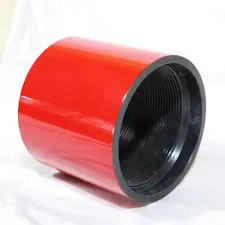- Afrikaans
- Albanian
- Amharic
- Arabic
- Armenian
- Azerbaijani
- Basque
- Belarusian
- Bengali
- Bosnian
- Bulgarian
- Catalan
- Cebuano
- Corsican
- Croatian
- Czech
- Danish
- Dutch
- English
- Esperanto
- Estonian
- Finnish
- French
- Frisian
- Galician
- Georgian
- German
- Greek
- Gujarati
- Haitian Creole
- hausa
- hawaiian
- Hebrew
- Hindi
- Miao
- Hungarian
- Icelandic
- igbo
- Indonesian
- irish
- Italian
- Japanese
- Javanese
- Kannada
- kazakh
- Khmer
- Rwandese
- Korean
- Kurdish
- Kyrgyz
- Lao
- Latin
- Latvian
- Lithuanian
- Luxembourgish
- Macedonian
- Malgashi
- Malay
- Malayalam
- Maltese
- Maori
- Marathi
- Mongolian
- Myanmar
- Nepali
- Norwegian
- Norwegian
- Occitan
- Pashto
- Persian
- Polish
- Portuguese
- Punjabi
- Romanian
- Russian
- Samoan
- Scottish Gaelic
- Serbian
- Sesotho
- Shona
- Sindhi
- Sinhala
- Slovak
- Slovenian
- Somali
- Spanish
- Sundanese
- Swahili
- Swedish
- Tagalog
- Tajik
- Tamil
- Tatar
- Telugu
- Thai
- Turkish
- Turkmen
- Ukrainian
- Urdu
- Uighur
- Uzbek
- Vietnamese
- Welsh
- Bantu
- Yiddish
- Yoruba
- Zulu
tubing collar
Understanding Tubing Collars Essential Components in Oil and Gas Operations
In the oil and gas industry, efficient management of fluids within wellbores is vital for successful exploration and production. Among the various components used in these operations, tubing collars play a crucial role. These collars are specialized fittings placed on the tubing string, serving to connect sections of tubing together, facilitate the installation of downhole tools, and ensure the integrity of the wellbore.
What are Tubing Collars?
Tubing collars are typically constructed from high-strength materials such as steel, designed to withstand the high pressures and harsh environments often encountered in oil and gas wells. They serve as transition points between different sections of tubing, ensuring a leak-proof connection. The design of these collars allows for seamless connections while accommodating thermal expansion and contraction of the tubing due to temperature variations deep within the earth.
The primary function of tubing collars is to hold multiple lengths of tubing securely together. The connections ensure that the structural integrity of the tubing string is maintained, preventing the risk of leaks and blowouts. This is particularly important in high-pressure wells where any failure in the tubing could lead to catastrophic consequences.
Types of Tubing Collars
There are various types of tubing collars designed for different applications
. They include coupling collars, which simply connect two lengths of tubing; packer collars, which are used with packers to seal off sections of the well and isolate fluids; and hanger collars, which support the tubing and provide anchoring points for other downhole equipment. The selection of the appropriate collar type depends on the specific operational requirements and the environmental conditions they will face.tubing collar

Importance in Operations
The significance of tubing collars extends beyond their basic functions. They are crucial in optimizing production efficiency and safety in drilling operations. Properly installed collars help to prevent leaks of hydrocarbons, which can be not only economically damaging but also hazardous to the environment and personnel. Additionally, tubing collars contribute to the efficiency of oil extraction processes by allowing for effective management of fluid flow, which is particularly advantageous in horizontal and deviated wells.
Challenges and Innovations
Despite their critical importance, tubing collars are not without challenges. Issues such as corrosion, fatigue, and wear can compromise their integrity over time. Operators must therefore select collars made from appropriate materials suited for the specific well conditions. Moreover, advances in materials science and engineering are leading to the development of more resilient collars that can withstand aggressive downhole environments. This includes the use of corrosion-resistant alloys and advanced coatings that extend the life of the collars and improve their performance.
Conclusion
In conclusion, tubing collars are indispensable components in the oil and gas industry, playing a vital role in the overall functionality and safety of drilling operations. Understanding their significance and ensuring their proper selection and maintenance is essential for the success of oil and gas projects. As technology continues to evolve, the future of tubing collars looks promising, with innovations aimed at enhancing their durability and efficiency, ultimately contributing to safer and more productive extraction methods. As the industry strives for more effective solutions, tubing collars will remain a cornerstone of reliable well operations.
-
Tubing Pup Joints: Essential Components for Oil and Gas OperationsNewsJul.10,2025
-
Pup Joints: Essential Components for Reliable Drilling OperationsNewsJul.10,2025
-
Pipe Couplings: Connecting Your World EfficientlyNewsJul.10,2025
-
Mastering Oilfield Operations with Quality Tubing and CasingNewsJul.10,2025
-
High-Quality Casing Couplings for Every NeedNewsJul.10,2025
-
Boost Your Drilling Efficiency with Premium Crossover Tools & Seating NipplesNewsJul.10,2025







